
A Royal Navy Wildcat from 815 Naval Air Squadron (NAS) successfully and independently shot down a Banshee target drone using the Martlet missile in the air-to-air role.
The test took place in the Manorbier Range, South West Wales, with a unique Banshee drone launched across the Bristol Channel from a catapult installation set up on the coast. Wildcat HMA2 helicopter lurking. The Wildcat then independently acquired and tracked the target drone using its own onboard targeting systems before launching a single unit Martlet missile to attack and destroy it.
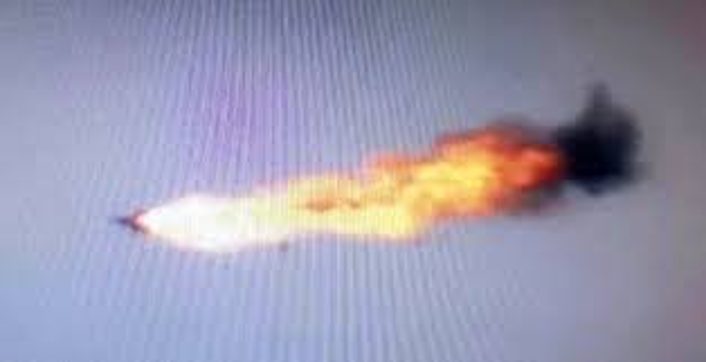 Banshee drone after being hit by a Martlet (Image credit: Royal Navy)
Banshee drone after being hit by a Martlet (Image credit: Royal Navy)
The success of this test demonstrates an important addition to the Royal Navy’s independent air defense capabilities, as the Martlet and Wildcat provide a significant standoff range allowing them to engage relatively small aerial targets such as the kamikaze drones deployed in the air. Ukraine and in the Red Sea. Helicopters are not often deployed in the air-to-air role, but their addition to the Wildcat provides the fleet with a much-needed extra layer of anti-drone protection.
Latest news article:
Martlet missile gives Royal Navy Wildcat helicopter proven air-to-air capabilities pic.twitter.com/ix8IF6uAsc
— Marine Lookout (@NavyLookout) November 2, 2024
Officer-in-Charge of 815 NAS, Commander James Woods, said the latest test was “a fantastic development for the Wildcat HMA2 helicopter and a significant advancement in maritime strike capability for the Royal Navy, improving our ability to neutralize airborne threats.” further refines the ability to scare and neutralize.”
“…Target destroyed…”
There’s an extra string on the bow of Wildcat helicopters after a Martlet missile – designed for use against surface targets – was first used against an aerial drone, shot down by @815NAS outside Wales.
pic.twitter.com/ob54QudF4q
— Royal Navy (@RoyalNavy) November 2, 2024
The Wildcat pilot who conducted the test, Lieutenant Dave Guest, also stated that “Martlet is a highly capable – and also cost-effective – weapon in our arsenal, ideal for this, while Banshee is representative of the challenges we face globally, especially in the Red Sea.”
A wildcat from the same squadron was sent on board to the Red Sea HMS DIAMONDwhere the Type-45 destroyer was attacked by multiple drones and ballistic missiles launched by the Houthi rebels in Yemen. In these engagements, targets were destroyed using a combination of the onboard 4.5 inch naval gun and the Sea Viper air defense system, firing Aster 15 and Aster 30 missiles, for medium and long range engagements respectively. While Aster missiles are effective against light aircraft and drones, they are not cost-effective for this type of combat, with the cost of the Aster missile far outweighing that of the drones launched against it. It makes no fiscal or material sense to waste expensive Aster missiles on small drones, when they should be saved to counter aircraft, cruise missiles and ballistic missiles.
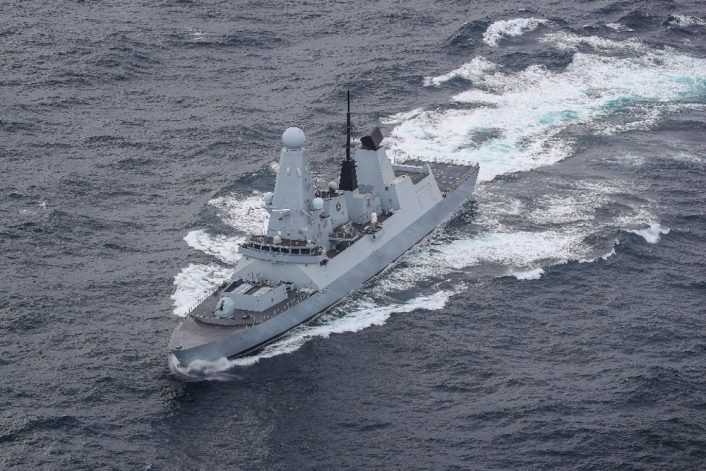 HMS Diamond (Image credit: Ministry of Defence)
HMS Diamond (Image credit: Ministry of Defence)
The deployed Wildcat was used extensively during World War II Red Sea Patrol act as an intelligence platform for locating Uncrewed Surface Vessels (USVs) launched by the Houthis. It was equipped with Martlet missiles, but could not use them in combat due to the timing of certain engagements. The latest live fire exercise proves that Martlet can be used in the air-to-air role and it is likely that reliance on the Wildcat for fleet defense in these scenarios will increase in the near future.
House martin
The missile was originally commissioned in 2021 with an initial role of targeting light surface ships, patrol boats and missile-equipped fast attack craft. Designed and built by Thales UK as the Lightweight multirole missile Due to its intention that it could attack a variety of air and land targets, it was quickly designated the Martlet by the Royal Navy upon its entry into service.
Initially, fear of the threat posed by Iranian fast attack craft in the Persian Gulf led to the development of the Martlet as a smaller and lighter alternative to the anti-ship missiles in use at the time, designed for flexibility, accuracy and the ability for planes to carry many at once.
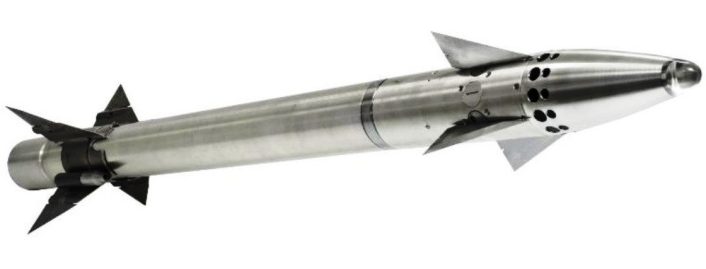 Martlet missile (Image credit: United24Media)
Martlet missile (Image credit: United24Media)
Martlet is equipped with the Semi-Automatic Command Line of Sight (SACLOS) system, a laser beam guidance system that allows precise targeting of the enemy that cannot be blocked. The small size of the system allows the deployment of racks of five missiles, with four of these racks mounted simultaneously, allowing for a total provision of five missiles. a total of twenty missilesgiving the Royal Navy massive defensive firepower against swarms of small boats and attack craft.
Still, the design for the Martlet is not entirely new, as it has a design lineage that goes way back to the 1970s. Blowpipe Surface-to-air missile that first saw action as a portable air defense system (MANPADS) during the Falklands War. The aerodynamic shape of the Blowpipe missile evolved little as it was developed into the Javelin and later the Starburst missiles, all of which were originally designed primarily to target aircraft. Thales used the aerodynamic design of the previous rockets to save time in producing new aerodynamic data, allowing them to focus on the internal components of the rocket itself. This produced a missile that can fly at a maximum speed of Mach 1.5 with a maximum range of 8 km, while carrying a 3 kg warhead.
This latest test proves the true versatile nature of the Martlet missile, allowing it to be used well beyond the Royal Navy’s original requirements.
Wildcat firepower. @815NAS Wildcats just show their teeth as they fire their new Martlet missile. #MaritimeAttackisBack
Read more: https://t.co/XfdNF7Jxcnpic.twitter.com/jbSbnigRJZ
— Royal Navy (@RoyalNavy) June 9, 2020
The Banshee
The fateful target for the Martlet in this test was the Qinetiq Banshee target drone, used by the Royal Navy as a kinetic target for weapons testing and a simulation target to test the reaction times and reactions of Royal Navy crews when encountering cruise missiles, drones and aircraft in their operational roles.
In this role, the Banshee entered service in 2021 during a limited sea trial led by Flight 700x NAS, testing the drone against the crew of HMS Prince of Wales in the simulated attack role. The Banshee is intended in part to replace the role of the Hawk T1s previously operated by 736 NAS for enemy warship training.
The variant shot down by the Martlet was a propeller-driven variant, without much of the test and sensor equipment used by the jet-powered variant of 700x NAS, the Banshee Jet 80.
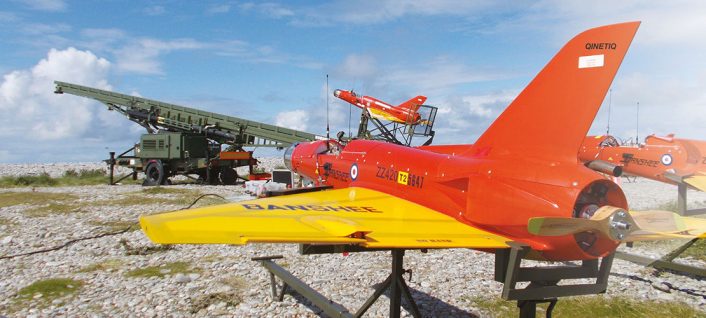 Banshee target drone (Image credit: Qinetiq)
Banshee target drone (Image credit: Qinetiq)
Use in Ukraine
Both the Martlet missile and the Banshee drone have been used by the Ukrainian armed forces in their fight against Russia’s illegal invasion.
The Martlet was supplied in large numbers to supplement the Starstreak MANPADS in use by the Ukrainian ground forces in the light air defense role. The Martlet missile is compatible with the Starstreak launcher and serves as a secondary munition source for both the MANPADS launcher and the six Alvis Stormer air defense vehicles also delivered to Ukraine.
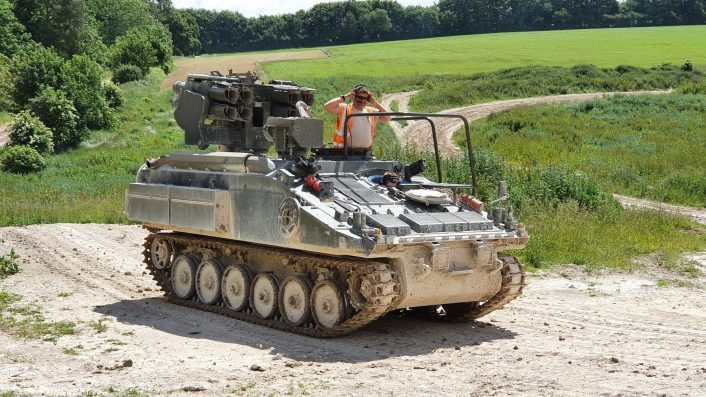 Alvis Stormer with missile mounting points (Image credit: Jamie Gray)
Alvis Stormer with missile mounting points (Image credit: Jamie Gray)
Six hundred and fifty Martlets were promised to be sent by Britain to Ukraine in 2024 after being used successfully during the earlier stages of the war, underscoring not only Britain’s commitment to the defense of Ukraine but also their own firm belief in the defense of Ukraine. success of the Martlet missile in the air defense role.
#Ukraine: The first video of a British-supplied Martlet multirole missile – not a Starstreak as widely claimed – in action with Ukrainian forces. As reported, a Russian Orlan-10 UAV was taken out and this seems credible given the response, but we cannot see exactly what was hit. pic.twitter.com/i6sP6649h6
— Ukraine Weapons Tracker (@UAWeapons) April 10, 2022
In addition, the Banshee drone has been supplied to Ukraine by Britain, with the jet-powered variant being used by the Ukrainian Armed Forces as both a kamikaze drone and an intelligence, surveillance and reconnaissance (ISR) platform. One Banshee was reportedly captured by Russia in February 2024, but supplies still remain at a high rate, suggesting there is some belief in the Banshee’s success in these roles.
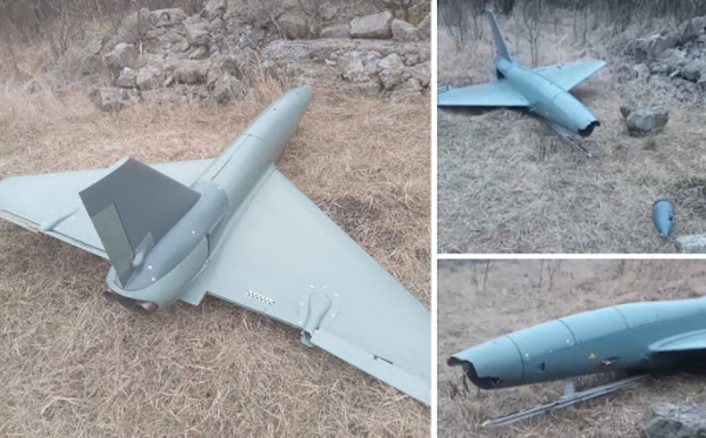 Banshee drone captured by Russian forces (Image credit: via HI Sutton)
Banshee drone captured by Russian forces (Image credit: via HI Sutton)
The success of the latest air-to-air tests signals another major success for UK research and development following the successful launch of the Sea Venom missile a few weeks earlier. The Royal Navy is on course to have a powerful weapons system in the Wildcat, with the success of both these recent trials ensuring the Navy is equipped to meet any threats it may one day encounter .